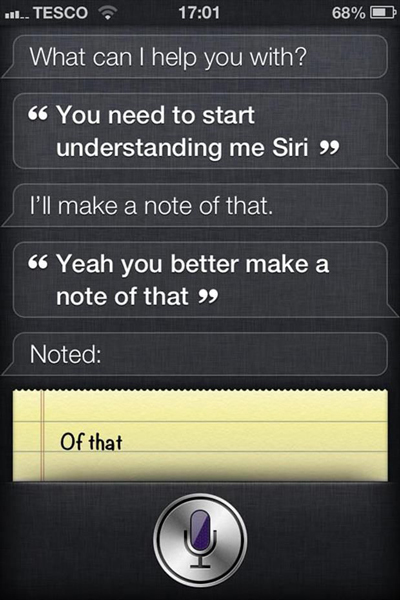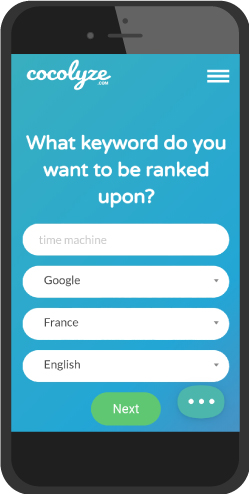The rise of Voice Search in the SEO world
Remember: What is Voice Search?
Voice search is a Google product that allows you to carry out search requests by speaking out loud to a mobile or computer rather than manually typing your request into the search bar. It works on speech recognition technology, anywhere at anytime.
Nowadays people want information immediately, and with the use of mobile phones dramatically increasing you need to be available 24/7 for your customers. This is where Voice Search comes in, where the rise of Siri, Alexa and Cortana is changing the way search works. Here are some aspects that’ll need to be taken into account for the future of SEO with voice search.
1. Our natural speech pattern
It’s not what you say, it’s how to you say it.

There’s a real difference between what we type into Google to what we say out loud in speech. For example in Google we can ask something in 2 or 3 words and it’ll understand us, e.g. Italian restaurant London. However if we said that out loud, we’d probably get people going ‘yes and your point is??!’ You’re more likely to say something like ‘where is a good Italian restaurant in London?’. It’s therefore important that the programming of voice search and SEO take into account our natural speech patterns.
For this, a change in your content could make the difference. If you want your content to be included in the voice search context then think about changing the tone of it. Make it more conversational to reflect how people talk in real-life. This way when voice searchers ask a question, your content will more likely appear in the results due to the similarity in tone.
REMEMBER
- People tend to use complete sentences when asking questions out loud
- Try to incorporate conversational language into your content
2. Advantage of long-tail keywords
I’m looking for a yellow dress with a pink flamingo pattern in size 12.
Remember that long-tail keywords are longer and more specific keyword phrases that visitors tend to use when searching on Google. For example, someone searching for a specific sofa won’t just type ‘sofa’ but the specific type they actually want to buy such as ‘leather blue sofa bed’.
So to really hack voice search, you’ve got to understand the way we talk; the way we talk to a search engine and the way we talk to a person. Short, broad keywords and expressions are great when doing a regular search but for voice search, it’s basically a conversation you have with your mobile phone. Think about it in the sense of asking a friend a recommendation for an Italian restaurant in London, but instead of getting a human reply, it’s a voice assistant robot.
If you want to grab traffic from voice search, your SEO strategy needs to focus on long-tail keywords to deal with the increased demand of voice search requests. Here are two big advantages of incorporating long-tail keywords:
1. Long-tail keywords bring-in qualified traffic to your website
The website traffic is much more qualified than short keywords because the keywords are more detailed and specific so you’re only attracting the audience you’re looking for.
2. There is less competition in the field
Specific searches are a lot less popular so by using long-tail keywords you can really make the most of the uncompetitive field. For example, everyones looking for brunch places on a Sunday but not everyone is looking for brunch places in the mountains on a Sunday. Less competition means you have a better chance of ranking higher in the SERP.
So if you want to attract these voice searchers think about adding or modifying your content. For example, these voice assistants at the moment tend to favor local restaurants, retailers, suppliers, takeaways etc so if you fit into one of these then think about adding a Q&A page. Try to foresee what voice search users will ask and apply this to your content strategy. That way, the next time someone asks for your services, your website might just pop-up in their answers.

REMEMBER
- Using specific and detailed keywords brings-in more qualified traffic
- Long-tail keywords helps you get past your competition
- Add a Q&A page to answer voice search requests
3. Being Mobile-First
For all those with texting thumb syndrome.
Remember that mobile-first means that Google now indexes sites based on their mobile or tablet appearance rather than from desktop PCs. So you might be asking ‘well what’s the link with voice search?’ Well, given that nearly 60% of searches are now from mobile devices and 77% of 18-34 year olds used voice search for a local business in the last 12 months, having a mobile-friendly website is a MUST!
Your website needs to fits the needs of this on-the-go audience, i.e. an easy-to-use website on smaller screens. Users won’t stick around if they land on your site and it doesn’t load quickly or provide the exact information they want. Make sure your content is optimized for mobile devices to improve your voice search rankings. Google has a free mobile-friendly test which tells you whether your website is optimized well enough or not.
Here you can see that Cocolyze is well-optimized on mobile devices  :
:

REMEMBER
- Majority of voice searchers use their mobile devices to find information
- Your website needs to be easy to use on smaller screens for those ‘on the go’
- Use the Google mobile-friendly test to see your level of optimization
4. Optimizing your page speed
Go! Go! Go! You have no time to lose here!
Even when we’re not in a rush, as human beings we still never have time to wait around. Whether it’s for a meal in a restaurant or a text message reply, and it’s the same when visiting a website. Searchers don’t have time to wait for a page to load when they know there are a million other pages that they could use to get their answer.
Searchers expect results immediately and if your page doesn’t load in less than 3 seconds, then I’m sorry to say but you’ve just lost a potential customer.
Something that will help straight away is compressing all the multimedia on your pages. The quicker your whole page loads the better the user experience and the more likely the user will stay. There are lots of compressors out there, here at Cocolyze we like compressor.io and imagify.io - free and easy to upload and compress images.
Voice search favors sites that load fast because the voice assistant not only has to find the answer to the search request but also process the voice in a matter of seconds. So the quicker your page loads, the more likely the voice assistant will choose yours to read out.
REMEMBER
- Your landing page needs to load in less than 3 seconds
- People expect voice searches instantaneously
- Compress your multimedia on your website to help
5. Importance of Local SEO
Get yourself on the map!

Voice search and local SEO are the perfect match…a bit like a nice glass of wine and some cheese  …back to the point in question, if your business has local intent then optimizing your website for voice search is indispensable. Voice searchers want immediate information whilst they’re out-and-about so if you want to attract this audience of ‘urgency’, there are a few tips and tricks I’m going to give you:
…back to the point in question, if your business has local intent then optimizing your website for voice search is indispensable. Voice searchers want immediate information whilst they’re out-and-about so if you want to attract this audience of ‘urgency’, there are a few tips and tricks I’m going to give you:
Firstly make sure you are listed in Google my Business. This is important for increasing your visibility on the web when people are searching for your offerings in the same area as you are based.
For example, you run an Italian restaurant (you can probably tell I like Italian food here  ) in Oxford. If your restaurant is listed in Google my Business then every time someone searches for an Italian restaurant in Oxford, your restaurant will appear in the results! This is increasing your visibility and potentially the number of your reservations!
) in Oxford. If your restaurant is listed in Google my Business then every time someone searches for an Italian restaurant in Oxford, your restaurant will appear in the results! This is increasing your visibility and potentially the number of your reservations!
The second tip is to make sure you add your NAP! And no, I don’t mean add a nap into your work day but your company’s name, address and phone number. So, that when someone asks ‘where is the nearest DIY store?’, your DIY store which is the nearest to them pops-up with directions and a phone number in case they want to call.
My final piece of advice is acquire, maintain and publish positive reviews of your business. No matter how many times we say we like trying out new brands, let’s admit that we either stick to what we know or we go for something based on the reviews.
Lots of people tend to search a product or service in Google with the word ‘review’ afterwards to feel reassured about their future purchase or reservation.
Don’t hesitate to contact your existing customers asking them for a little testimony, if they’re satisfied, they’ll be more than happy to do it  .
.
REMEMBER
- Local SEO is vital for attracting nearby customers who need immediate information
- Make sure your business is listed in Google My Business
- Collect positive reviews of your company to reassure future clients
6. Focus on featured snippets
The who, what, why, where and when questions.
As a recap, featured snippets are the answer results right at the top of the SERPs in a box with the source of the information, and what are often called ‘position zero’ results, as they are the results pushed right to the top of the results page. Position zero is a feature implemented by Google that is a summary of the ‘best’ result for a searcher.
And, it’s these featured snippets that are read out by the voice assistants as the answer to a voice search request.
As voice search works on the basis that you’re having a conversation with a human being, i.e. you ask a question verbally and expect a verbal reply, the searcher won’t get told a list of results, they’ll get told just one! And if a featured snippet is available for this request then it’s that answer that will be chosen by the voice assistant.
So no matter how beautifully written your meta description or title is, if you’re not in the running for that position zero then your lovely content will be missed by the voice searcher. This is why creating a Q&A in your content can help in your SEO strategy for voice search. It makes it easier for search engines to pull out the featured snippet from your content for that much desired position 0. BUT…it’s not you that chooses whether your content is a featured snippet or not, it’s if Google thinks your content is the best result in comparison to all other content for the search request.
REMEMBER
- The voice assistant tends to read featured snippets out as answers to search requests
- These featured snippets are normally at ‘position zero’
- It is Google that chooses which featured snippet appears in the results
Conclusion
Voice Search has the real potential to gain even more in popularity due to the convenience and this new ‘cool’ side of searching. Although Google shows no real signs of a shift towards voice search, make sure your website is optimized so that you’re not missing out on important traffic!
